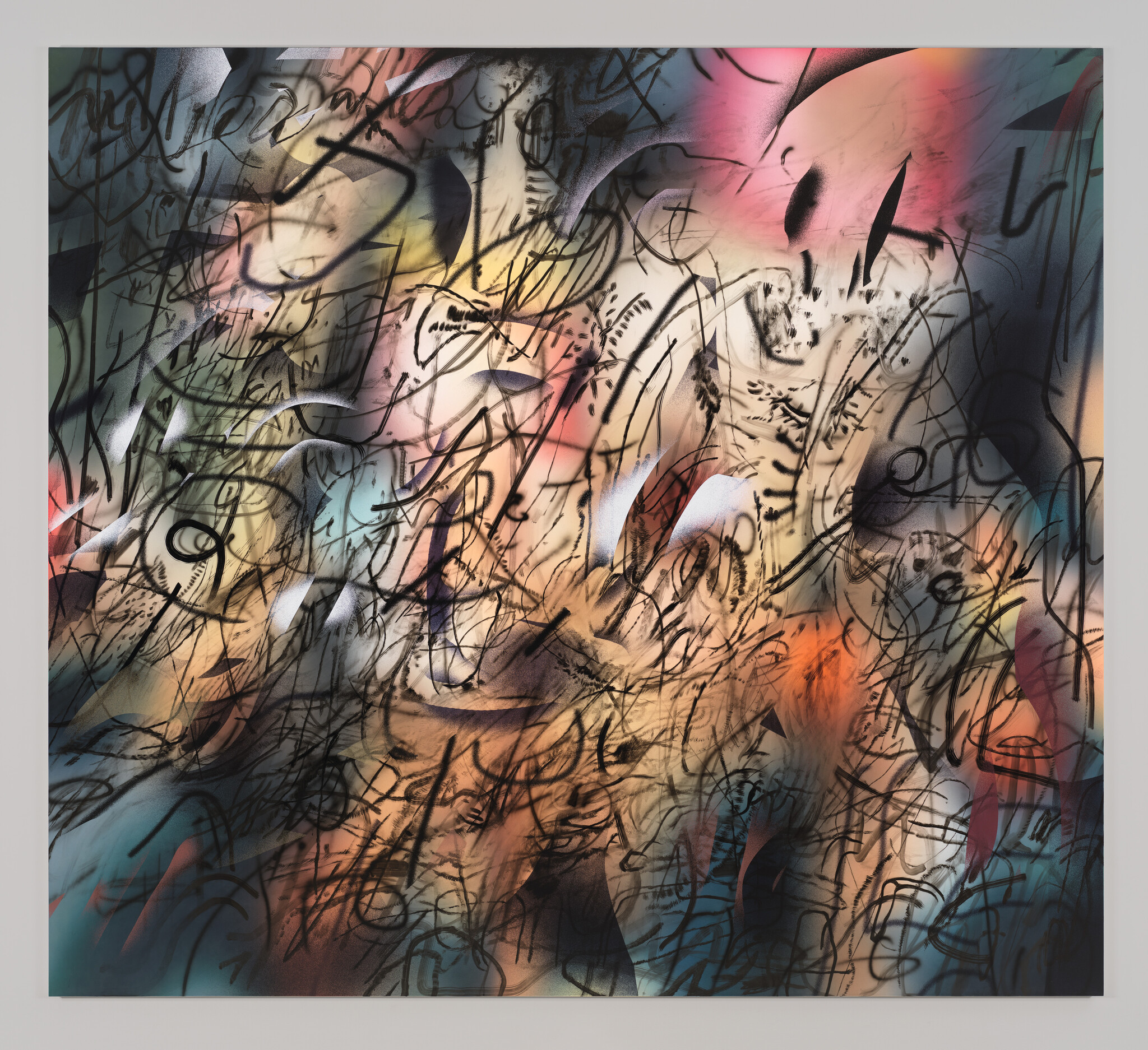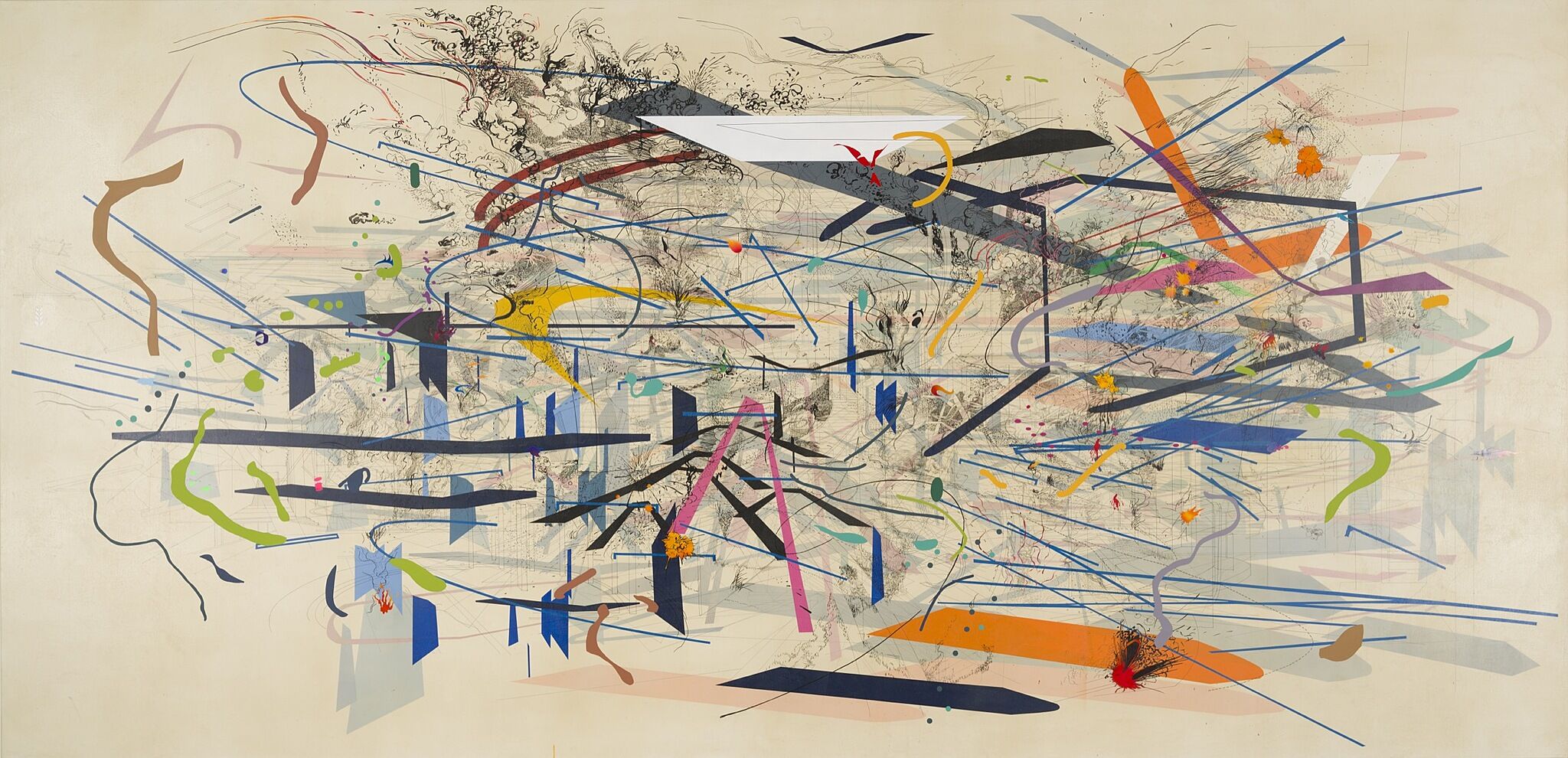Ghosthymn (after the Raft)
Mar 18, 2021
0:00
Ghosthymn (after the Raft)
0:00
Narrator: Mehretu made this painting specifically for this site, facing the Hudson River. It was in progress in January 2020, when we interviewed her for this audio guide.
Julie Mehretu: The underpainting is made from blurred images of anti-immigration rallies, from here, Germany, and the U.K., and they're very riotous images of enormous crowds protesting against Merkel's acceptance of many immigrants and migrants from the Mediterranean that came into Europe, and also from Eastern Asia and North Africa.
One of my fascinations, and thinking around this and thinking about the river and thinking about the point of entry to this country being the city still, in this case. The airports in this country are a big point of entry for many people seeking asylum, and for many immigrants coming to this country, but also the history of Ellis Island. That's something you can't ignore when you look out at the Hudson River.
Everyone looks at the Statue of Liberty. And that's this marker of this history of this country and what kind of created that. So I was thinking about that water, that behavior, that history, the evolution of this place. In the making of that painting I've been really studying [Théodore] Géricault's Raft of the Medusa.
Narrator: The Raft of the Medusa is an early nineteenth century painting. It depicts a cannibalistic disaster on a life raft used in the wake of a shipwreck near Mauritania. The painting is based on a real event—a scandal of exploitation and incompetence. It’s famous both for its dynamic composition and its unflinching portrayal of death. Here, Mehretu imagines turning the history depicted in the painting upside down.
Julie Mehretu: Instead of the destitute of Europe trying to go to the colonies to further their lives in a colonial project, you have the reversal of that. So something about that haunting, that kind of recalling of time, that inheritance in a way that is immersed in those gestures is something that I'm thinking about in the making of this painting. But it will be this visceral experience [in which] something else will emerge and I'm still in the midst of working on that.
In Julie Mehretu.


